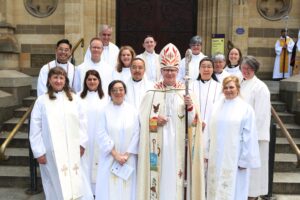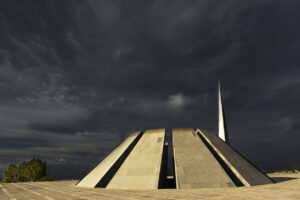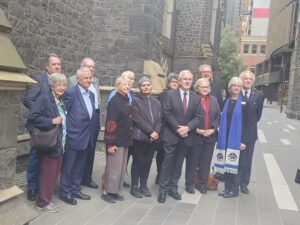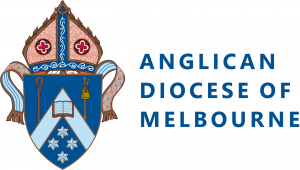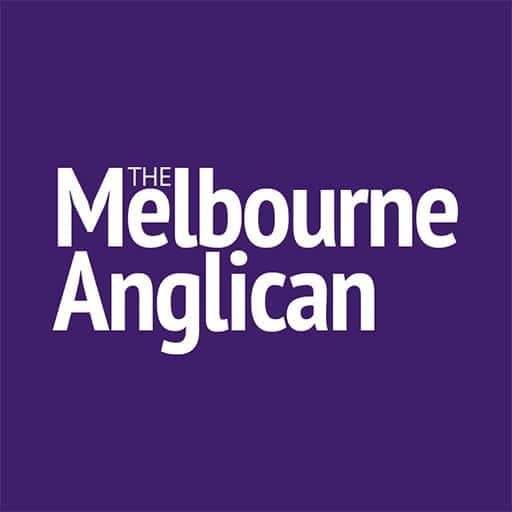
Elspeth Kernebone
2 October 2024
It’s the question on everyone’s lips. “Who will be the next archbishop of Melbourne?”
Well, we’ve run the numbers. We can’t tell you who it will be, but we can tell you what’s likely.
To identify the “classic archbishop” we brought together the technical specifications of each of Melbourne’s 13 archbishops, and took the average. Included in this are diocesan bishops prior to the role of archbishop’s creation.
We looked at age at taking up the role, country of birth, previous roles, tenure and marital status.
Our search took us as far as the Australian Dictionary of Biography wide as the online archive Trove, the sources for nearly all the information in this story.
And remember the old maxim, past-performance-is-not-a-reliable-indicator-of-future-performance. Please take our predictions with salt!
So … what traits does the typical specimen of a Melbourne archbishop exhibit?
Let’s start with the elephant in the room: the pronouns we’re using.
We could use “he” throughout this piece; the numbers are consistent on this demographic feature.
However, given the present archbishop took up the role in 2006, before women were first permitted to become bishops in 2007, we will use “they”. It might grate on your grammar (I’ve heard no one tipping multiple archbishops), but we live in hope.
Read more: The archbishop is retiring. What happens next? Explainer
So, how old are they likely to be? Melbourne’s first bishop Charles Perry (1847-1876) stands as the youngest person to take on the central role, at the tender age of 40. Peter Watson (2000-2005) stands as the oldest, at 64.
But, if we take the mean of all 13 people to serve as leader, the next archbishop is likely to be 53.
If we look at the mode (what’s most common), it’s 55 or 51. Six of Melbourne’s diocesan bishops and archbishops have been one of those two ages at appointment, with an even split between the two.
What experience is the next archbishop likely to have?
Based on your classic archbishop, in their previous role the new incumbent is likely to have been a bishop in Australia, or a vicar in the United Kingdom, and maybe a canon or subdean as well.
There are a few exceptions to this pattern. For instance, Keith Rayner (1990-1999) was archbishop of Adelaide when he took on leadership of Melbourne, and Frank Woods (1957-1977) was a bishop in the United Kingdom.
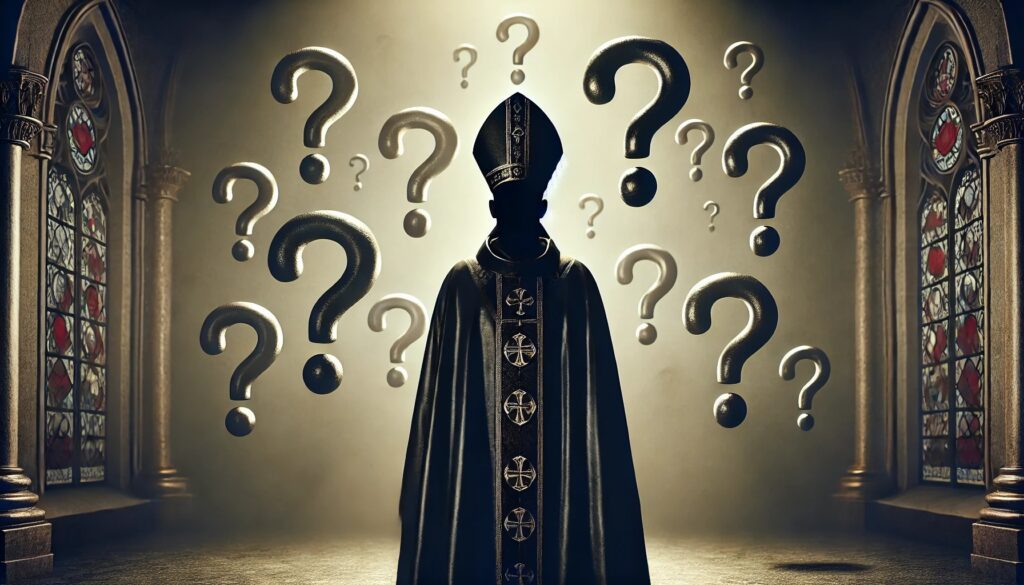
However, the odds don’t favour Melbourne’s Assistant Bishops. It’s been 40 years since the diocese last elected a Melbourne Assistant Bishops archbishop, David Penman in 1984.
Just three in 13 archbishops or diocesan bishops have previously served as an Assistant Bishop in Melbourne. (Bob Dann (1977-1983) and Joseph Booth (1942-1956) are the other two).
And where will the next archbishop have been born? Well there’s a more than 50 per cent chance it was in England. There’s just a 31 per cent chance they were born in Australia. (Although if we take the model of recent years, Australia seems likely. Four out of five past archbishops were born on local ground, and the only exception was David Penman, born far away in New Zealand).
And of course, another critical question. How long will our new leader reign?
Archbishops cease to hold office when they reach the age of 70. So it depends a bit on how old they are to start with, and on any unforeseen circumstances. Obviously, if your average archbishop – consecrated at 53 – saw out their term, it would be 17 years.
Read more: What does Melbourne need in a new archbishop? Board calls for your thoughts
However, for a range of reasons, not every archbishop or diocesan bishop of Melbourne has served his full term. Three sadly died in office, while Melbourne’s second bishop James Moorhouse (1876-1886) was translated to Manchester.

Charles Perry remains Melbourne’s longest standing diocesan bishop or archbishop – with 28 years in the role. No one else has cleared 20 years. (Frank Woods (1957-1977), Henry Lowther Clarke (1902-1920) and Philip Freier have all come close, at 19, 18 and 18 (2006-most likely 2025).)
But using the power of averages, The Melbourne Anglican is pleased to reveal our next archbishop’s likely term. It is 12.6 years.
And … marital status? Married, every archbishop and diocesan bishop has been. Most likely, their wife will be called Jean, Michelle or Karen.
Two former archbishop’s wives share the name Jean, making it the most likely option if we go by mode (most common).
But, if we take the following premises:
- Our likely archbishop is 53
- His wife is probably about the same age
We can make a case for Michelle or Karen as being the top options for the archbishop’s wife. Michelle was the most popular girl’s name in 1971 in Queensland and NSW, Karen was the second most popular girl’s name in NSW, fourth in QLD.
(We couldn’t find Australia-wide name data for 1971, but we’re willing to depart from our thus far rigorous processes to consider Queensland and NSW data as likely broadly representative.)
And so – the big ticket item – the archbishop’s name? Well, surprisingly, in 176 years of the Melbourne diocese, and 13 incumbents, no names are repeated – so averages offer us nothing.
But if we assume they’re 53 … if it’s a woman, we already know her likely name.
If our new archbishop is a man, we can use the same next method. So, expect either:
Archbishop Jason or Archbishop Michelle.
Notes
- At a few points, specific retirement dates were unclear, and so the exact tenure was unclear. Every effort was made to confirm these, but please take our apologies for any errors. With thanks to the diocese’s archivists who checked December 1990s TMA to confirm Keith Rayner’s exact consecration date, which was quite close to his birthday.
For more faith news, follow The Melbourne Anglican on Facebook, Instagram, or subscribe to our weekly emails.

